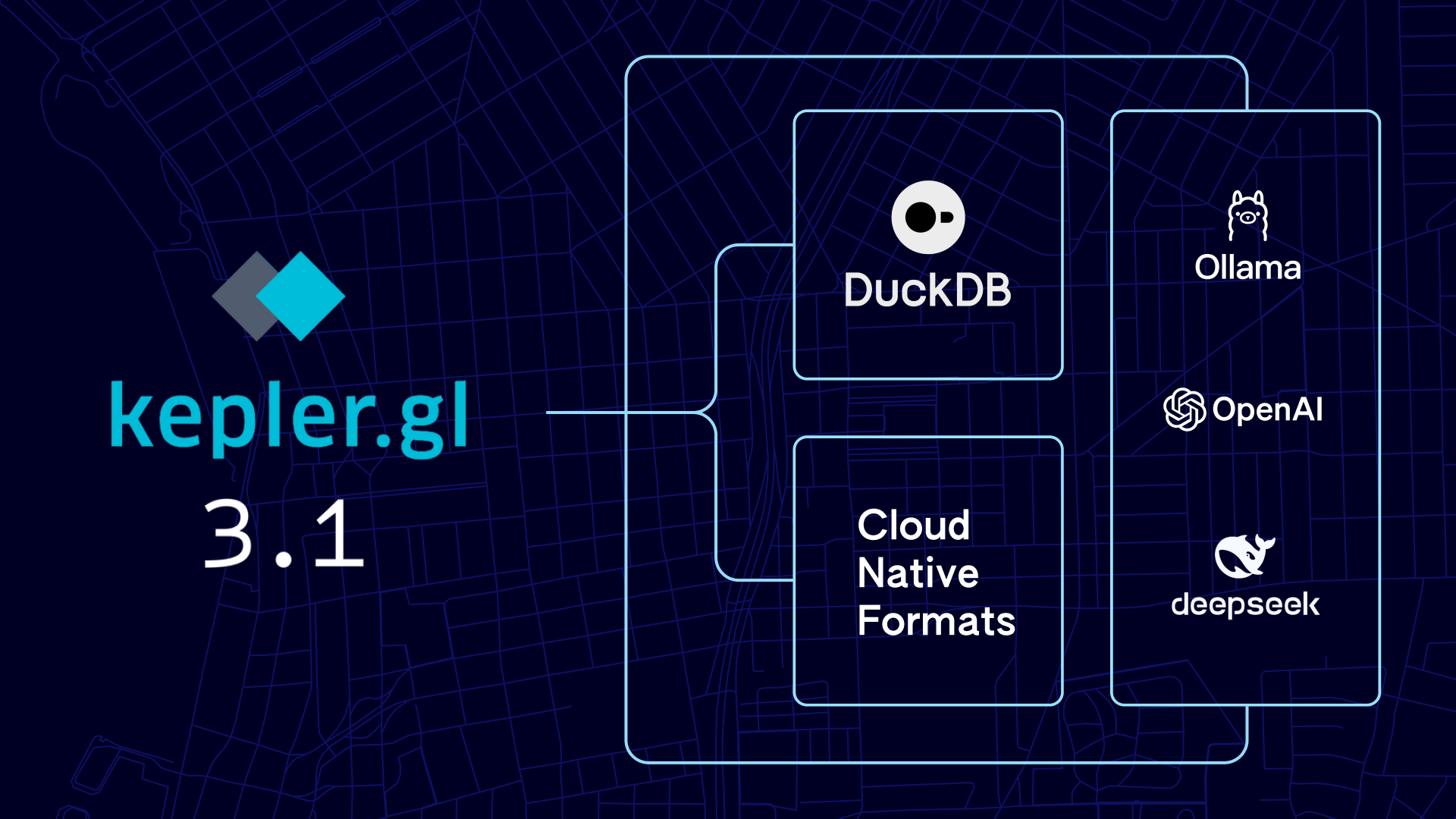Over the past year, Foursquare has quietly undergone a transformation focused on one thing: velocity. Velocity in our decision making, our operational rhythms, and our ability to continuously ship value to our customers and partners through our products. Like all transformation work, this change required the usual suspects: difficult decisions, new expectations and most significantly, an underlying culture shift.
As we have begun to see the fruits of our labor (the launch of new products, innovations in the geospatial industry, and a healthier balance sheet) we’re pulling back the curtain on the internal transformation efforts behind the scenes to share what we have learned so far.
1. Building a high velocity organization requires a principle-based culture
Even before I joined Foursquare, our CEO Gary Little and I began talking about how to drive culture change in service of business results. We shared an ethos around the type of culture that supported a high velocity operating mode: a principle-based culture that provided context over control. We wanted our leadership principles to dictate and define decision making instead of processes and policies that needed to be tightly managed. Our shared belief was that a principle-based culture is inherently the precursor for a high performance culture. A principles-based culture offers radical autonomy, but requires high degrees of excellence, accountability and intrapreneurship in turn.
The organizations that get this right know how to turn principles into action. Netflix, famously principle-based, had one simple expense policy: “Act in Netflix’s best interest.” Amazon used their leadership principles to define how they operate. The “door desk” anecdote illustrates this perfectly: early employees used cheap doors as desks to symbolize frugality, but also as a reminder to invent and simplify (reflective of their core principles). Ben Horowitz, one of Foursquare’s original investors and former board member, articulated it beautifully in his book: What You Do Is Who You Are: “Who you are is not the values you list on the wall. It is not what you say at an all-hands. It is not even what you believe. It is what you do.”
Over the past decade, Foursquare has quietly become the leading geospatial intelligence platform – despite most people still thinking of us as a “check-in” social app. Many of our original peers are either massive, publicly-traded behemoths or frankly, have failed. Foursquare, conversely, is a small, private, profitable company that requires a scrappy, resourceful and entrepreneurial team to challenge the status quo.
What does this mean in practice? Despite our age on paper, we’re still operating in startup mode. That means we need people who want to build, push, and solve hard problems — at speed.
The challenge was that our organizational infrastructure – our systems, structure, policies and processes — weren’t designed to support that operating mode or reward those behaviors. And behaviors become culture.
So we began rethinking culture by rethinking rewards – which meant redesigning performance from the ground up.
2. Traditional performance management processes produce friction, not velocity
One of the first questions I asked the team when I started in my role leading the People team at Foursquare was: how many PIPs do we do? The answer was higher than I expected, but the answer to the next question surprised me even more: “How many people successfully respond to PIPs and remain at the company?” The answer was over 25%.
For anyone familiar with PIPs (Performance Improvement Plans), they are predominately used to manage people out of the organization and ensure feedback is properly documented. Put simply, they are a piece of risk management infrastructure.
It’s a bit of a catch-22. If people are coming OFF of PIPs, that means that they didn’t receive clear and constructive feedback that might have improved their performance much earlier in the process. Essentially, it’s pointing to an upstream performance management failure —or worse, that performance isn’t a prerequisite for success in your culture. If you’re part of a People Team without good performance infrastructure around you, you’re locked in triage, treating symptoms, not root cause. No wonder a team like that might develop a reputation of being a blocker, not strategic, or too process-heavy (all common complaints about HR teams).
PIPs are characteristically antithetical to a vision of a principle-based, high performance culture. PIPs are a process, they add risk infrastructure, and they are a symptom of moving too slowly and giving feedback too late. In line with our principles, we wanted to live in a “post-PIP world.” In a post-PIP world, performance standing is so clear to employees that by the time you WOULD give an employee a PIP, you simply offer severance instead with a shared understanding that it’s not working.
I realized at that moment that we could preach principles all day long, but nothing would change if we didn’t redefine the underlying performance system and everything it encompassed: standards, feedback, recognition, accountability, compensation, and consequences.
The challenge I walked into was the difficulty of executing that vision in a world where the majority of people-related processes and technology are designed to slow things down, not speed things up.
Most organizations still operate on an annual or bi-annual performance review cadence and lean heavily on 360 data collection for feedback. Therefore, most performance technology is designed to support most organizations operating in this way. Annual performance reviews grind the organization to a halt to ensure everything is documented and discussed up, down and around. Some individuals end up with 20+ 360 reviews to complete. Calibration sessions require extremely detailed and documented preparation. There are benefits to this model: at its best, documented, thoughtful feedback and careful calibration, but at its worst, costs the company thousands of hours of productivity to harvest data that is stale by the time it’s delivered. As an organization working to move quickly and drive real-time, data-driven decisions, we had an allergic reaction to this approach: it was slow, process-heavy, and the data was lagging.
The other challenge with traditional performance management is that it’s highly focused on the individual. So when most work happens in teams or cross-functionally, it relies on 360 data to capture input, but still focuses on how the individual performs, vs. how the team performs.
Conversely, efforts to shift to remove performance processes entirely and shift to “anytime feedback” (which Foursquare had attempted to implement even before I joined), require a massive behavior change to properly ensure adoption. The irony? Low adoption rates of those new behaviors result in inconsistent and spotty feedback, resulting in the emergence of downstream performance issues articulated above.
3. A performance system designed to support velocity needs light-weight processes and real-time data.
So what did we do?
- We defined a philosophy that challenged performance norms and fit our needs: team-based performance
Based on the downstream symptoms we were experiencing with performance management, we knew we needed to revisit the philosophical underpinnings of what great performance meant at FSQ. We landed on team-based performance. So much of classic performance management rewards the individual over the team, which naturally creates the wrong incentives. Or as Gary put it: “we wanted to win championships, not individual awards.” We felt a high performing team would be more impactful than a team of high performers, and wanted our entire performance system to reflect that guiding ethos.
Aligning on a guiding philosophy was only half the battle. We needed a clear set of behaviors that aligned to that ethos, and our beliefs. Building on the foundation of high performing teams, we built out the behaviors required to drive high team performance, which aligned to and reflected our Leadership Principles at every step. We wanted the team to be crystal clear on what behavior would be rewarded at both the team and individual level.
We also renovated our career matrix. We wanted shared standards across levels of the organization, regardless of discipline. We architected an overhaul of what it meant to exhibit these behaviors at different compensation levels at Foursquare. Very specifically, not titles. Alongside our work to renovate performance, we’ve been working to flatten the organization, build more self-directed teams, and focus less on traditional power structures like title and hierarchy and more on project roles and distributed responsibility.
- We chose a challenger performance platform designed for high signals at speed: Confirm
We needed a performance technology platform to bring this philosophy to life that didn’t simply perpetuate the status quo of annual performance reviews. After reviewing the major players like Lattice, Rippling, and Culture Amp, we ended up choosing Confirm. Confirm was the only platform that provided team-based (in their case, network analysis) data as an input for performance in lieu of a traditional 360. Their technology was also designed to be light-weight, fast and easy to use.
We needed always-on data collection to support data-driven feedback and decision making year round. The Organizational Network Analysis (ONA) feature provided a snapshot view of talent in the organization (star performers, influencers, detractors) as assessed by peers. Confirm also had a number of features designed for speed: AI-enabled summaries which pulled from the data to provide a draft write-up for managers, word limits on the amount that can be written to ensure team members are concise and direct, skill and capability tagging which autopopulates.
- We broke with convention on process: year-round impact tracking, network feedback, and no more 9-box
Confirm’s capabilities enabled us to implement year-round impact tracking, feedback, and recognition on the platform vs. anchoring in an annual or bi-annual data collection period. We still ran a “performance check-in” and compensation review as the kick off to more continuous data collection and help people understand how to use the platform, but we intentionally stressed the imperative of collecting data year round and will now be running multiple lightweight data collection cycles.
We deprecated the 9-box in favor of a simple 5-scale ranking on expectations, with 5 being a stretch goal, “redefines expectations,” to set a higher bar. The 9-box, though providing additional nuance, required additional complexity that didn’t align with our drive for simplicity and clarity.
We intentionally did not set a curve, but intentionally reset the standards around performance ratings (our first time through this, 60% of the organization self-ranked as exceeds. That came down to 25% in calibration). We shared these numbers publicly with the organization and provided the context. We also shared the top tagged behaviors associated with folks rated as “exceeds” so it would be clearer to team members what behaviors were being rewarded.
We also broke out of previous constraints around merit & promotion increases. Instead of taking a peanut butter approach to merit where everyone gets between 2-5% increases, we didn’t cap increases and let Executives make the case for rewarding high performers in line with their contributions and impact.
- We reimagined growth and development to support the model
Simultaneously, we shifted our learning and development efforts from a suite of programs that people can tap into but were not highly utilized (online learning, access to coaching, a blanket learning stipend) and instead invested our energy, time and resources into:
- Team Effectiveness coaching: facilitated coaching of intact teams to support more effective teaming and more open feedback, in line with our Team Performance philosophy.
- Employee-led growth: application-based learning stipends that require a business-aligned rationale for investment.
- Building high performance teams at all levels: we’re currently working on resources and support for team members at all levels (not just managers) on how to contribute to high performing teams.
Each one of these programs is focused on increasing impact and investing directly in the change we are trying to drive. Each program requires teams and individuals to take initiative, self-manage and keep the business objectives in mind. To build on the peanut butter metaphor: instead of peanut butter given out indiscriminately to everyone to be “fair,” peanut butter sandwiches are given to those who are hungry and ask.
In line with our principles, we’re building a system that provides higher autonomy and requires higher accountability. Most importantly, providing radical clarity on what we’re building and why enables people to opt-in or out – not only to the programs we provide, but the entire experience of Foursquare today.
Our results so far: a leap forward in velocity
Culture change takes time — and it requires behavioral change across all parts of the organization. Over the past year, we’ve been focused on making that culture shift real – and measuring it. The results from our most recent engagement survey show we’re making progress.
One of the clearest signals: a big jump YoY in how employees perceive our velocity – momentum, urgency, and the ability to move fast.
- “I would describe FSQ as a place that operates with velocity (momentum, urgency)” is up +24 points from the same time last year – a 43% increase YoY.
- “I am able to operate with speed at FSQ” is up +15 points (24% increase YoY)
- “At FSQ, we act on promising new or innovative ideas” is up +14 points (26% increase YoY)
- “We are rewarded for operating with speed (testing fast, learning and iterating)” is up +13 points (28% increase YoY)
We also see signs that a high-performance culture is starting to take hold. Teams are pushing for better outcomes and holding higher standards. But feedback and mentorship still need work, especially after flattening the org. And while team collaboration has increased, recognition for team impact is still catching up; we need to better connect how we evaluate and reward both team and individual contributions.
Together, these results give us confidence that our culture is shifting. We’re operating with more speed. Teams are delivering. And we’re starting to lay the foundation for long-term success.
That cultural momentum is showing up in our business results. Despite the challenging macro environment, 2024 was our most profitable year in Foursquare’s history and Q12025 was our first profitable Q1 in company history. No single change drives those results, but the direction is clear: we’re learning faster, moving faster, and building a culture that fits the business we are today.



